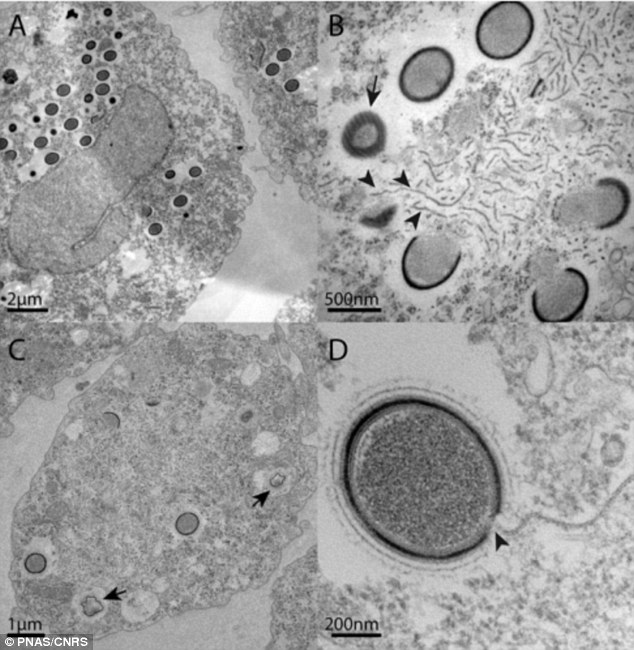| Online: | |
| Visits: | |
| Stories: |

| Story Views | |
| Now: | |
| Last Hour: | |
| Last 24 Hours: | |
| Total: | |
Resurrecting a monster virus: Scientists to ‘awaken’ bug that has laid dormant in frozen Siberian wastelands for 30,000 years
A giant virus that has been perfectly preserved in the frozen wastelands of northeastern Russia is about to be brought back to life.
Scientists said they will ‘reanimate’ the 30,000-year-old bug to learn more about it and discover if it is harmful to animals or humans.
Called Mollivirus sibericum, it is the fourth prehistoric virus to have been found since 2003, and experts warn climate change and thawing ice could resurrect similar, dangerous pathogens.
The virus was discovered by the French National Centre for Scientific Research in the Kolyma lowland region of Russia.
It is the second virus of its kind to be found by the team, and joins other giant viruses including the Minivirus from 2003, the Pandoraviruses found in 2013, and Pithovirus sibericum discovered last year.
To qualify as a ‘giant’, a virus must be longer than half a micron, or a thousandth of a millimetre (0.00002 of an inch).
Mollivirus sibericum, which translates to ‘soft virus from Siberia’, measures 0.6 microns and can be seen using light microscopy.

Writing in the journal Proceedings of the National Academy of Sciences (PNAS), the researchers said: ‘The saga of giant viruses started in 2003.
‘Two additional types of giant viruses have been discovered [and] we now describe Mollivirus sibericum, a fourth type of giant virus isolated from the same permafrost sample.
‘These four types of giant virus exhibit different structures, sizes, genome length, and replication cycles.
‘Their origin and mode of evolution are the subject of conflicting hypotheses.
‘The fact that two different viruses could be easily revived from prehistoric permafrost should be of concern in a context of global warming.’
The regions in which these giant microbes have been found are coveted for their mineral resources, especially oil, and will become increasingly accessible for industrial exploitation as more of the ice melts away.
At the same time, climate change is warming the Arctic and sub-Arctic regions at more than twice the global average, which means permafrost is thawing.
‘A few viral particles that are still infectious may be enough, in the presence of a vulnerable host, to revive potentially pathogenic viruses,’ lead researcher Jean-Michel Claverie, said.
‘If we are not careful, and we industrialise these areas without putting safeguards in place, we run the risk of one day waking up viruses such as small pox that we thought were eradicated,’ he added.
Professor Claverie and colleagues will attempt to revive the newly discovered virus by placing it with single-cell amoeba, which will serve as its host.
Pithovirus sibericum was ‘reanimated’ in March 2014 using similar techniques.
That particular virus was found in a 98ft (30 metre) deep sample of permanently frozen soil taken from coastal tundra in Chukotka, near the East Siberia Sea.



